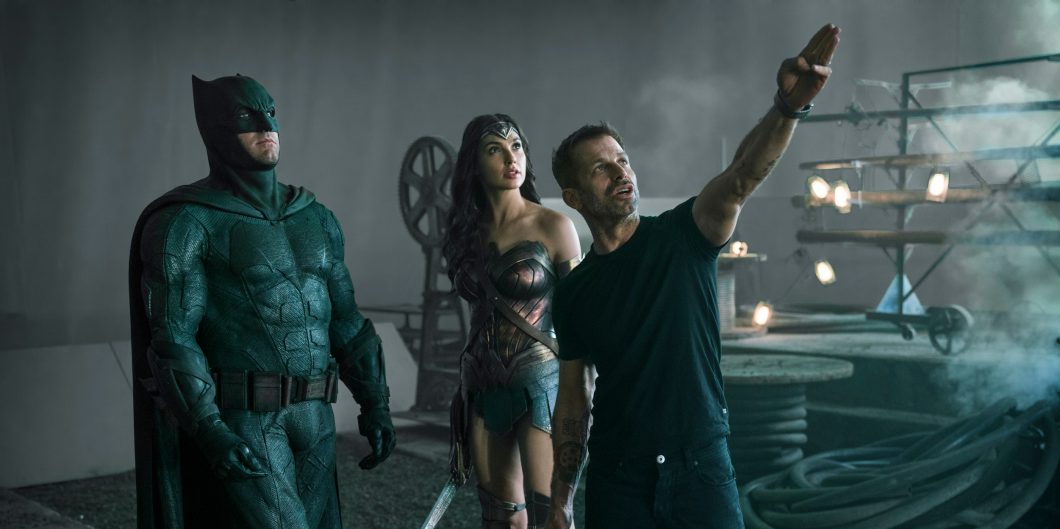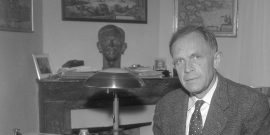Everywhere you look, you can find radical opposition to the values of American society.
Tragic Nobility and the Heroic Virtues
The cinematic event of the year is Zack Snyder’s Justice League, now on HBO, four years after the very expensive Justice League fiasco. This is a unique display of popular love for cinema in an age of boring, forgettable blockbusters lacking vision: A movie made after years of fans campaigning online to #ReleaseTheSnyderCut, including support from wonderful critics like Armond White and Sonny Bunch. Eventually Warner Bros. brought back the beloved director to finish his work.
Snyder was fired from Justice League just as he was crippled by grief after losing his child. Warner Bros. replaced him with Joss Whedon (Avengers), who butchered his work to flatter a studio that betrayed the Nolan-Snyder vision to imitate Marvel. The worm turns, however: Whedon, once a liberal darling, was canceled in 2020 after #metoo accusations and other complaints from actors and actresses, as well as his ex-wife, who suspects his feminism was a lie all along.
Now, the people get their champion and Snyder gets his redemption. The two-hour 2017 version is replaced by the four-hour movie originally designed as a conclusion to this generation’s most popular genre. Even the aspect ratio was restored to his original 4:3 design. (Largely unseen since the introduction of sound). These narrower, taller compositions especially fit the human form and allow Snyder to show us the best portraits in popular cinema in the digital age.
The Justice League
Snyder is unique in Hollywood because he has vision, unlike the dozens of replaceable directors and writers making blockbusters, whom one cannot remember because they cannot distinguish themselves. True cinematic vision offers a way of characterizing protagonists and putting together a story—it establishes how the camera works and the film is edited. Hollywood’s incessant talk of creativity and diversity suggests it boasts myriads of visionaries, but the reality is a desert.
Seeing the artist at work, we can tell why Hollywood became a wasteland: We lack vision, because we do not understand its source—that which explains why we tell stories in the first place. Snyder is moved by his unique belief in nobility. He devotes himself to the animating struggle that makes heroes, without neglecting how ordinary life is part of mankind’s great cosmic adventure. In other words, he orients us in a way that helps us comprehend the entirety of history from antiquity to high technological modernity.
Thus, gadgets and mythical figures are set side by side in Justice League. He cuts from heroes to ordinary people and their struggles, showing how the heroes themselves are fundamentally tied to their families, such that love and friendship animate the story. Moreover, the tragic side of our nature dominates the storytelling—families are broken and forgiveness sought through sacrifices, while the demands of politics make miserable precisely the great, on whom they mostly fall.
Nihilism is Snyder’s great adversary, and he wants to help the young save themselves from its nothingness. Our fundamental vulnerabilities bring us together, but do not make us the same—there remains the difference between those who strive and those who despair. He shows us the terror of our times, the destruction of the world, the possibility that we have set causes in motion which we can neither understand nor stop, or that some ancient evil will return to doom us.
Accordingly, the heroes he brings together are hardened by great suffering. Because of their broken families, they can dedicate themselves to public things, but only if they can fend off self-hatred first. They rightly feel their powers were bought at a terrible price and there is no longer any way to use them for a good purpose. Mankind’s dependence on heroes is the problem of Justice—their mutual dependence is what makes them a League.
Death, Beauty, and Heroism
In a review, we cannot go through all six heroes and their struggles—the most decent one will serve to characterize Snyder’s humanism. The Flash is a boy working silly jobs to become a criminal defense lawyer to save his father from the terrible injustice of being jailed for his wife’s murder. He needs the law to put his family back together, to deal with this injustice. Meanwhile, he lives out a version of his father’s fate—damned to ignominy because America misjudges his virtue. His father, seeing this, suffers all the more.
The Flash lives out a contradiction the plot must resolve—absolutely confident of his father’s innocence, he has no confidence himself. This might be most young men nowadays, which is Snyder’s way of suggesting that common problems could lead to great achievements, or that suffering has a way of leading men to strength. We are not invited to pity him as much as to understand that his power came out of weakness.
Mid-job interview, the Flash sees a woman about to die in a crash—a fairytale beauty driving a convertible, looking wistfully at this callow youth. His lightning quickness saves her, and allows Snyder to freeze frames—we see her as he does. This reproduces a fundamental experience, apart from the story—any beautiful sight arrests us and seems at the same time to be part of eternity. The moral equivalent of that experience is the desire to turn back time to right wrongs, which defines the young man whose heart is pure. This turns out to be crucial to the plot.
The experience of a young man in love typifies this entire aspect of the storytelling—the movie is full of these freeze frames which mix longing and agony, hope and danger, to persuade the audience, young people especially, to look at the movie as that boy does at that girl, to be animated by the same desire to achieve something worthwhile—indeed, some saving power in face of tragedy—to fend off despair.
The combination of death and beauty in such scenes makes for high art—it is Snyder’s attempt both to understand our predicament as mortals longing for eternity and to guide action. We used to call this humanism—the belief that being human is worthwhile despite the catastrophes and terrors of history. That belief depends on the possibility of human action, on our ability to act to a good purpose and succeed, which is best seen in heroes.
Resurrection
Heroism includes different powers and various souls, but they all come together in Superman. The members of the Justice League are parts of Superman and yet lack his completeness. They all live out contradictions to be solved by bringing Superman back to life, the great burden of the story. Accordingly, Batman keeps mentioning faith winning over reason, and we see a church in front of hell in the last act.
Earnestness about faith makes Snyder unique among our celebrated artists—he shows us how despite all of our efforts to the contrary at the core of our beliefs remains Christ. Heroes dying only to be resurrected by some deus ex machina are not rare—it happens, it seems, every year in Marvel movies. It’s an old joke, you can’t die till the box office returns go down. But here, instead of the cheap climax, we get three hours of cinema driven by hope, fear, and an intricate plot.
As kids look up to superheroes, so do they look up to Superman. It would seem that human action, to be possible at an ordinary level, has to be possible at the extraordinary level. Somehow, without greatness, mediocrity isn’t even possible. This may be a bitter pill to swallow given the envy characteristic of democracy, which our social media abets, but the success of our most serious superhero movies suggests we are sometimes free from envy and alive with admiration.
Perhaps this is why we admire the Founders and other such great men—without them, there would be no America, even though America is now us inhabiting the lengthened shadow of their institutions. But this also gets to a deeper question about human nature—Justice League suggests that belief in providence is natural, universal, that we cannot orient ourselves without it or make sense of the cosmos—we seek out always, by hints provided by beauty, the good we fundamentally need.
If he’s right about his audience, American character hasn’t changed as much as it sometimes seems—yet it’s become almost impossible to speak to what we admire and thus to come together and gain confidence in our ability to act. One solution is to restore heroism, which isn’t merely about great achievements, but about the effect they have on communities. Cinema in this sense is a public service, a needed education for public spirit.
Antiquity and Technology
The full-length movie restores the story to its completion and allows for characterization, of course, but above all, it restores the central themes that dominate Snyder’s moviemaking, which we may call technology and faith. One of the scandals of the 2017 version was it cut out the only black hero on the team, Cyborg, who shows in his body both modern medicine and the powers technology gives us—we are now all cyborgs and have to make the best of it, since we cannot abandon our technology.
But science also puts life and morality into question. The bane of our heroes is called “the equation of anti-life”—the demons trying to destroy mankind are trying to destroy life as such—they are an embodiment of entropy and our vulnerability, mortality, as well as the limits of knowledge and morality. It turns out technology does not suffice to destroy this enemy, perhaps because we’re not sure technology is good or even under our control. Indeed, the sources of power that form this equation are said to call to the demons, rather like Tolkien’s rings do.
Perhaps the most interesting paradox of the story is its politics. The demonic enemy of mankind is an absolute tyranny that boasts unbreakable unity, one will to rule all. Mankind’s weakness is a kind of anarchy, where we fight each other in irrational ways. The heroes are supposed to provide unity precisely by being different and each insisting on his own importance, even if they are all inferior to Superman—they somehow are supposed to lead mankind to freedom while preventing self-destructive wars.
Civilization is therefore in danger and modern man’s one hope is that ancient man faced this threat and survived. The Amazons, the Atlanteans, and the old gods are said to have won a defensive victory, fending off the cosmic enemy. But the fate of these ancient forgotten civilizations also suggests there was something missing in them—they were essentially hopeless. Unchanged over millennia, they avoided the cosmic challenge. The problem of the origin of history recurs at the end of history.
The death of God, to borrow Nietzsche’s phrase, restores this fundamental conflict within civilization. The plot is worked out such that high modernity, the creation of the cyborg and the death of Superman, causes this terrible danger to reemerge. An Amazon and an Atlantean are now merely two parts of a larger, more powerful team. Needless to say, Justice League cannot solve our civilizational problem—but it suggests we need ancient powers if we are to succeed, if we are to find new heroes.



